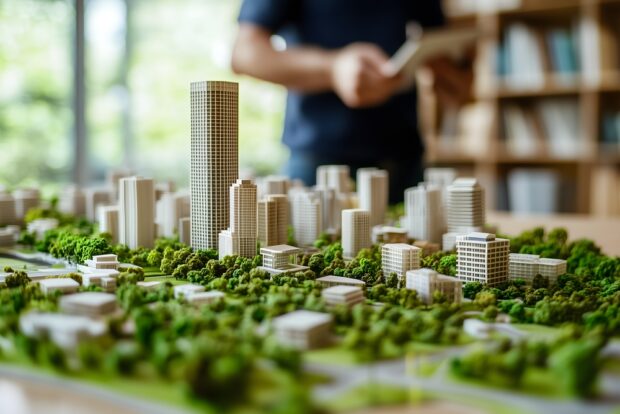Nampa, Idaho has transformed from a modest agricultural community into one of the fastest-growing cities in the Treasure Valley. The growth in Nampa, Idaho is not simply a matter of population increase, but a broader shift that touches housing, commerce, and industry. Families and businesses alike are drawn to Nampa’s affordability compared to Boise, its proximity to outdoor recreation, and its expanding opportunities for employment. This surge of new residents has created both opportunities and challenges for city planners, developers, and civil engineers.
While growth brings vitality, it also intensifies demand on existing infrastructure. Roads that once handled light traffic now see daily congestion. Utilities built for a smaller population are stressed by new housing developments and industrial facilities. Schools, parks, and emergency services are all under pressure. Infrastructure planning in Nampa must anticipate not only the needs of today’s residents but also the accelerated pace of future expansion. Without smarter strategies, the city risks bottlenecks that could slow progress, discourage investment, and diminish quality of life.
Civil Engineering and Infrastructure Planning in a Growing City
Civil engineering is at the heart of Nampa’s ability to respond to rapid growth. Every road, water line, bridge, and stormwater system must be designed to handle present demand while allowing for scalable upgrades in the future. Traditional infrastructure planning often followed a reactive model, with improvements made after capacity was exceeded. In Nampa, however, such a strategy would quickly fall behind. The pace of land development in Nampa requires proactive measures.
Engineers and planners must work together to integrate modern solutions into the city’s growth framework. This includes adopting smart technologies for traffic flow, investing in water conservation infrastructure, and ensuring stormwater management systems are resilient to both population growth and climate shifts. Civil engineering firms engaged in Nampa, Idaho projects are finding that forward-looking designs are not optional but essential. The region’s soil conditions, elevation, and seasonal weather patterns further complicate development, requiring careful calculations to balance structural integrity with environmental sustainability.
Infrastructure planning in Nampa cannot be limited to physical assets alone. The digital infrastructure that supports communication, business, and education must expand alongside physical systems. Broadband connectivity, for example, is now as critical to community vitality as roads and bridges. Civil engineers and planners must adopt a holistic perspective, treating Nampa’s infrastructure as an interconnected system where success in one area supports success in another.
The Role of Land Development in Nampa’s Transformation
Land development in Nampa is perhaps the most visible indicator of growth. New subdivisions, retail centers, and industrial parks are appearing at a steady pace. Developers, eager to meet housing demand and capitalize on Nampa’s appeal, are purchasing farmland and open tracts for large-scale projects. While these developments expand the city’s tax base and provide needed housing, they also place significant demands on infrastructure systems.
Each new subdivision requires water and sewer extensions, road access, stormwater solutions, and utility hookups. Without careful coordination, this can lead to fragmented systems where one neighborhood has adequate service but neighboring areas struggle. Smarter infrastructure planning means ensuring that land development projects align with citywide goals, creating cohesive networks instead of piecemeal fixes.
Another challenge is balancing Nampa’s agricultural heritage with its modern expansion. As farmland transitions into residential and commercial use, questions arise about preserving open space, protecting water resources, and maintaining community character. Civil engineering plays a pivotal role in this balance. Techniques such as low-impact development, permeable pavements, and green infrastructure can allow land development in Nampa to support growth without erasing the environmental qualities that make the city attractive.
Developers, planners, and engineers must also consider long-term sustainability. Energy-efficient building practices, integrated transportation systems, and renewable energy infrastructure are increasingly important to both residents and investors. By weaving sustainability into the DNA of land development, Nampa can position itself as a forward-thinking community prepared for decades of success.
Transportation and Mobility Challenges in a Growing City
One of the most pressing issues tied to growth in Nampa, Idaho is transportation. Daily commutes into Boise and around Canyon County highlight the need for efficient, well-planned roadways. Congestion on Interstate 84 and key arterial routes underscores the importance of comprehensive transportation planning. Infrastructure planning in Nampa must address not only current traffic demands but also the projected increases tied to population and economic growth.
Civil engineering solutions for transportation go beyond widening roads. Roundabouts, adaptive traffic signals, and dedicated lanes for buses and bicycles can improve flow and safety. Integrating multiple modes of transportation—cars, buses, bikes, and pedestrians—ensures that Nampa does not become overly dependent on single solutions that may not scale effectively. Public transit expansion will likely become increasingly important as more residents settle in the city, reducing the need for every commuter to rely solely on personal vehicles.
Mobility is also about accessibility. As Nampa grows, ensuring that neighborhoods remain connected to schools, shopping centers, healthcare facilities, and parks is essential. Infrastructure planning must emphasize not only movement across the city but also equitable access. A family in a new subdivision should have the same ability to reach essential services as a long-time resident in central Nampa. By prioritizing mobility within the larger framework of growth, Nampa can build an inclusive community where prosperity is shared widely.
Preparing Nampa for a Sustainable Future
Sustainability is at the core of smarter infrastructure planning. Growth in Nampa, Idaho brings opportunities, but without careful stewardship, it could strain natural resources. Water availability is one of the most critical issues. Civil engineers and planners must design systems that maximize efficiency, reduce waste, and prepare for periods of drought. Innovative irrigation, wastewater recycling, and green stormwater systems can all contribute to long-term resilience.
Energy use is another area where infrastructure planning is vital. As Nampa expands, energy demand will grow. Integrating renewable energy sources, such as solar, into both residential and commercial developments can reduce dependency on external supply chains and lower environmental impact. This approach not only supports sustainability but also enhances Nampa’s reputation as a progressive city.
Environmental considerations also include air quality, green space preservation, and climate adaptation. Land development in Nampa can incorporate parks, walking trails, and natural buffers to ensure that rapid urbanization does not erase the qualities that attract residents in the first place. Civil engineering solutions that integrate sustainability are not simply “nice to have” features but necessary investments in Nampa’s long-term competitiveness.
Public engagement will also shape Nampa’s future. Residents are stakeholders in the city’s growth, and infrastructure planning should incorporate community voices. By aligning professional expertise with local input, Nampa can build infrastructure that reflects shared values and meets practical needs. Transparency in planning, financing, and implementation will strengthen trust and ensure that growth feels like an opportunity, not a burden.
Conclusion
Nampa’s growth is both a challenge and a chance to redefine what it means to be a thriving city in Idaho. The demand for smarter infrastructure planning has never been greater, as civil engineering, transportation, land development, and sustainability intersect in ways that will shape the city’s future. Growth in Nampa, Idaho is not slowing, and without thoughtful planning, the city could find itself overwhelmed by the very success that makes it attractive.
Civil engineers, city planners, and developers must work together to anticipate demand, build resilient systems, and integrate sustainability into every project. Infrastructure planning in Nampa is not about solving today’s problems alone but creating a framework for the next fifty years of prosperity. By aligning land development in Nampa with smarter strategies, the city can embrace growth while preserving its heritage and natural resources.
Nampa stands at a pivotal moment. With proactive, innovative planning, it can transform rapid expansion into a sustainable and prosperous future. Without it, the pressures of growth may undermine the city’s potential. The choice is clear, and the time to act is now.
Need a Civil Engineering Company in Nampa, ID?
Our company has experience in all aspects of surveying, including topographic and boundary measurements, construction staking projects, sub division platting, and land development. We perform all stages of the work, starting with the initial survey before having experienced engineers come in for the preliminary and final stages of planning. Then, we’ll perform the construction staking, and do the final record drawings for projects. We know our success is linked to the success of our client’s project. We will work with you to define the scope of services and set an agreed-upon budget. Call us today!

